# Project Time Zone
# I.The Significance of Time Zone Management
(1) Make a unified identification record of the event time in multi-time zone projects (the users of the projects come from different time zones and the business crosses time zones such as sailing) to avoid losing offset information.
(2) According to a unified requirement, calculate and display the data under a specific time zone to ensure uniqueness. Such as global headquarters aggregate data.

Goal: Converts all uploaded data time to time in the display time zone to view.
For example, a user in the Middle East uses a Chinese server to view data at San Francisco headquarters. All he needs to do is configure the display time zone as San Francisco time zone and then view it.
# II. Configure Project Time Zone
Administrators and above roles can configure project time zone information in 'Project Management' → 'Analysis configuration'.
(1) The default time zone is configured to be closed, i.e. it is directly calculated and displayed according to the original time of the reported data.
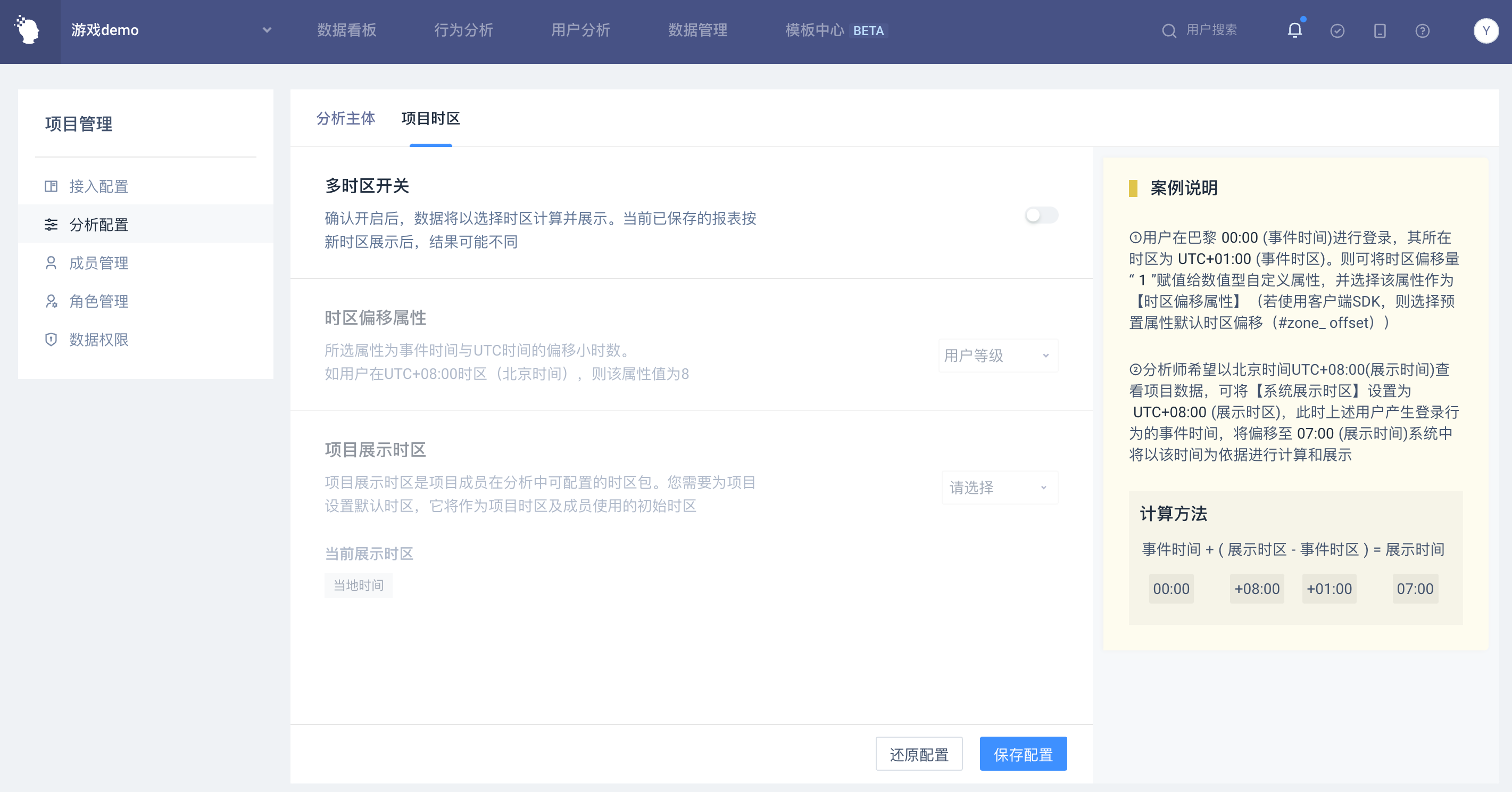
(2) Click to turn on the 'Multi-time Zone Switch' to start the configuration of the project time zone.
(3) Set the time zone offset attribute.
Select the property that records the time zone information in your reported data as the 'Time Zone Offset Attribute'. Use numeric data to record the number of hours offset between event time and UTC time. The effective range of this value is limited to values between -12 and 14.
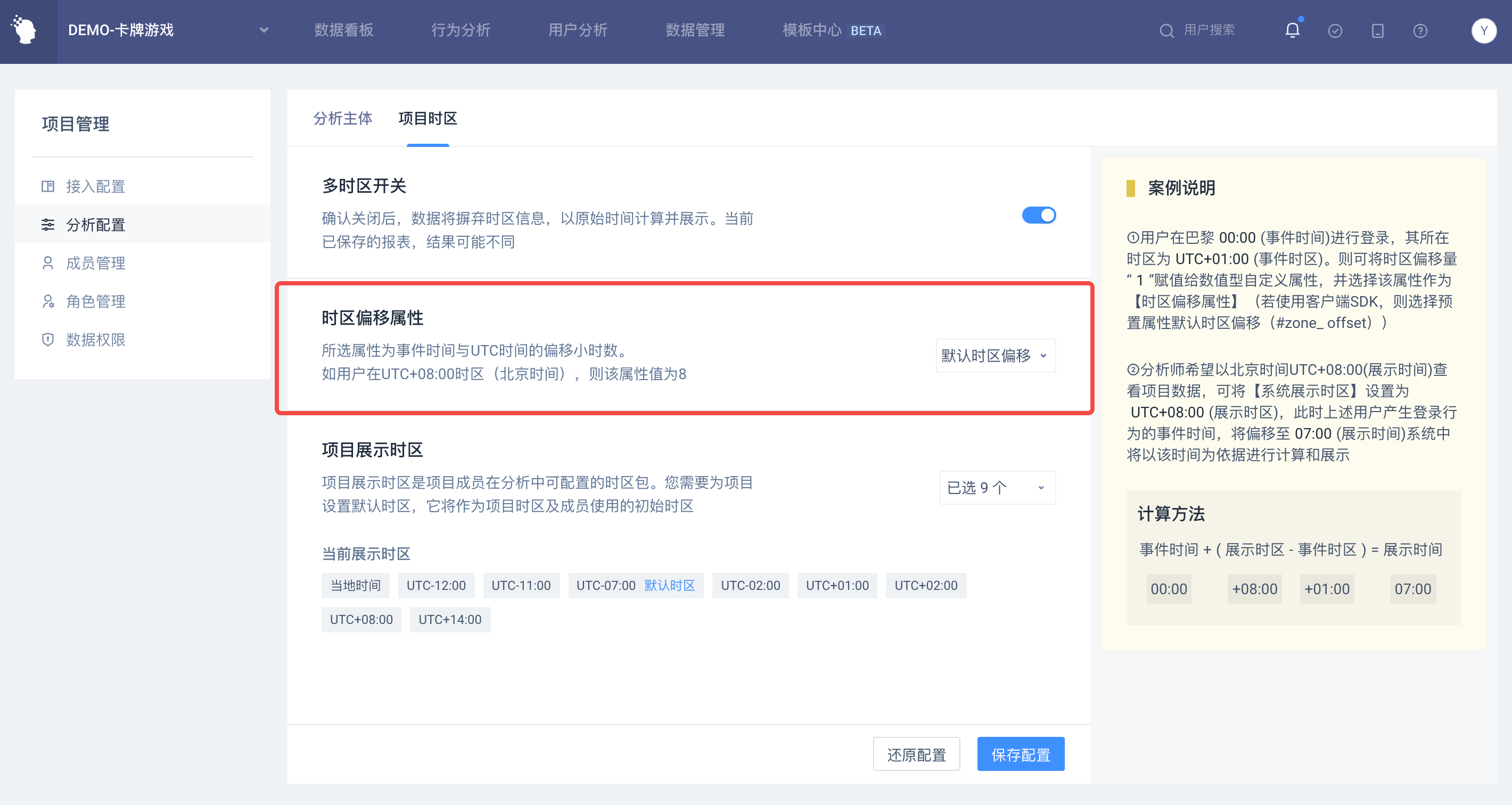
TIP
If using client side SDK (Android SDK v2.2.0/iOS SDK v2.2.0/JS SDK v1.2.0/Unity SDK v1.4.3 or above or other client side SDK), TA will use #zone_offsetby default to automatically collect time zone information. At this point, you can directly select "Default Time Zone Offset" ( #zone_offsetattribute) as the time zone offset attribute.
(4) Select the Project Display Time Zone
Select the time zone that needs to be time aligned during analysis. You can set the time zone under the statistical condition that you use most frequently as the default time zone, which will be the initial default time zone used by project members during analysis.
For example, if the headquarters is in San Francisco (UTC-08:00), and the condition of global data is unified according to this time zone, UTC-08:00 can be set as the project display time zone.
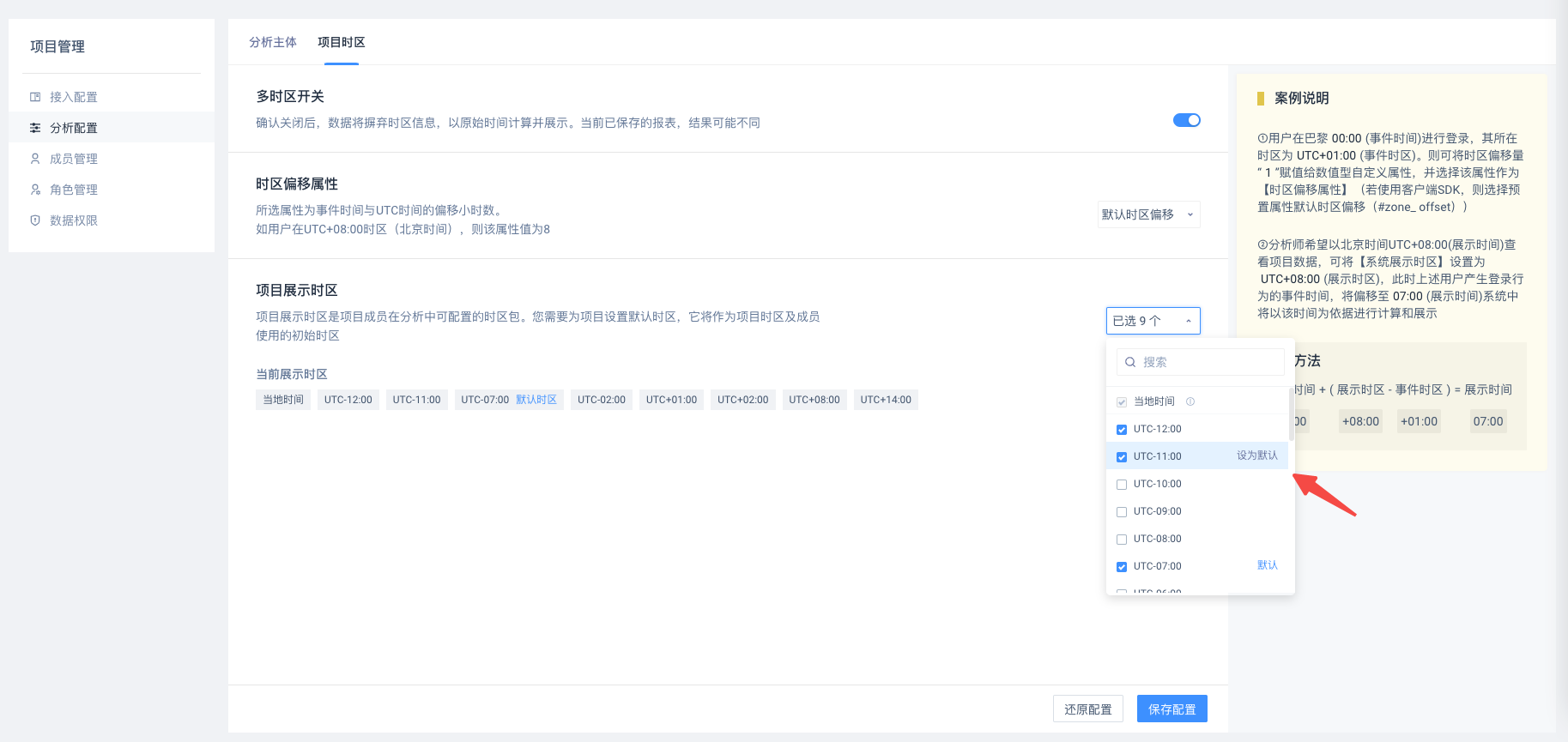
(5) Calculation of Display Time after Time Zone Offset
Show Time = Event Time + (Show Time Zone - Event Time Zone)
(6) After setting up, click 'Save Configuration' to make statistical analysis using different time zones in the analysis model.

# III. Application of Time Zone
# 3.1 Scope of Application
(1) Model, Dashboard Analysis Period, Analysis granularity (by day, by week, etc.)
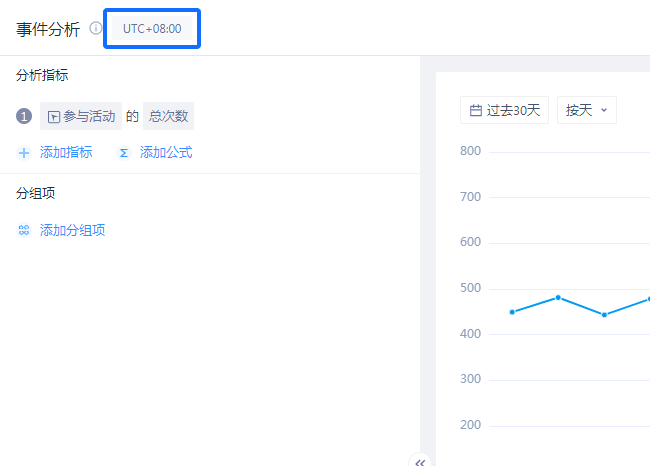
(2) Model, Dashboard Tables, Charts, Download Data, Time Type Data in User List (except attribute analysis)
Time type data includes trigger time and event attributes.

(3) ??????????Time in the filter conditions in the model and dashboard, and the time in the conditional group.
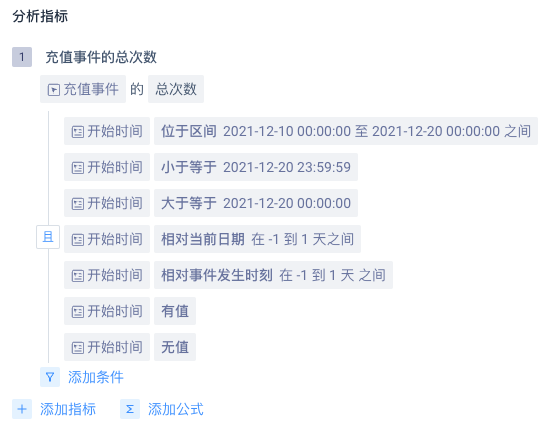
(4) Time in global time filter is offset time

(5) Time in User Behavior Sequence
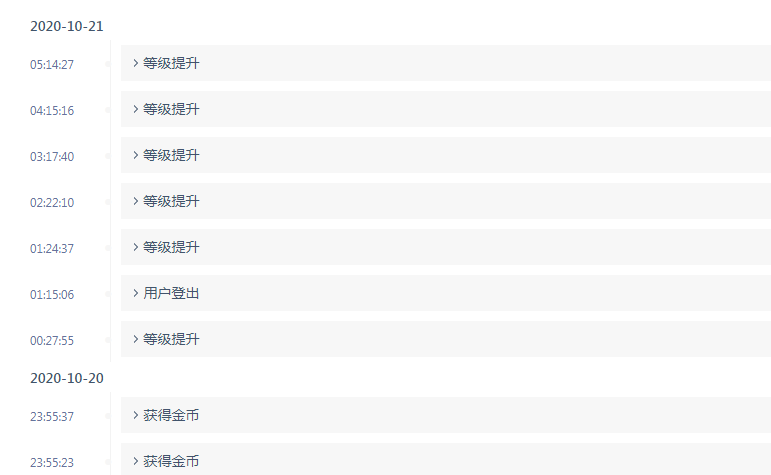
(6) Grouped by Attributes of Time Type and Set Aggregate Granularity

(7) Statistical Time and Display Time in Early Warning Management (calculated and displayed by default time zone)
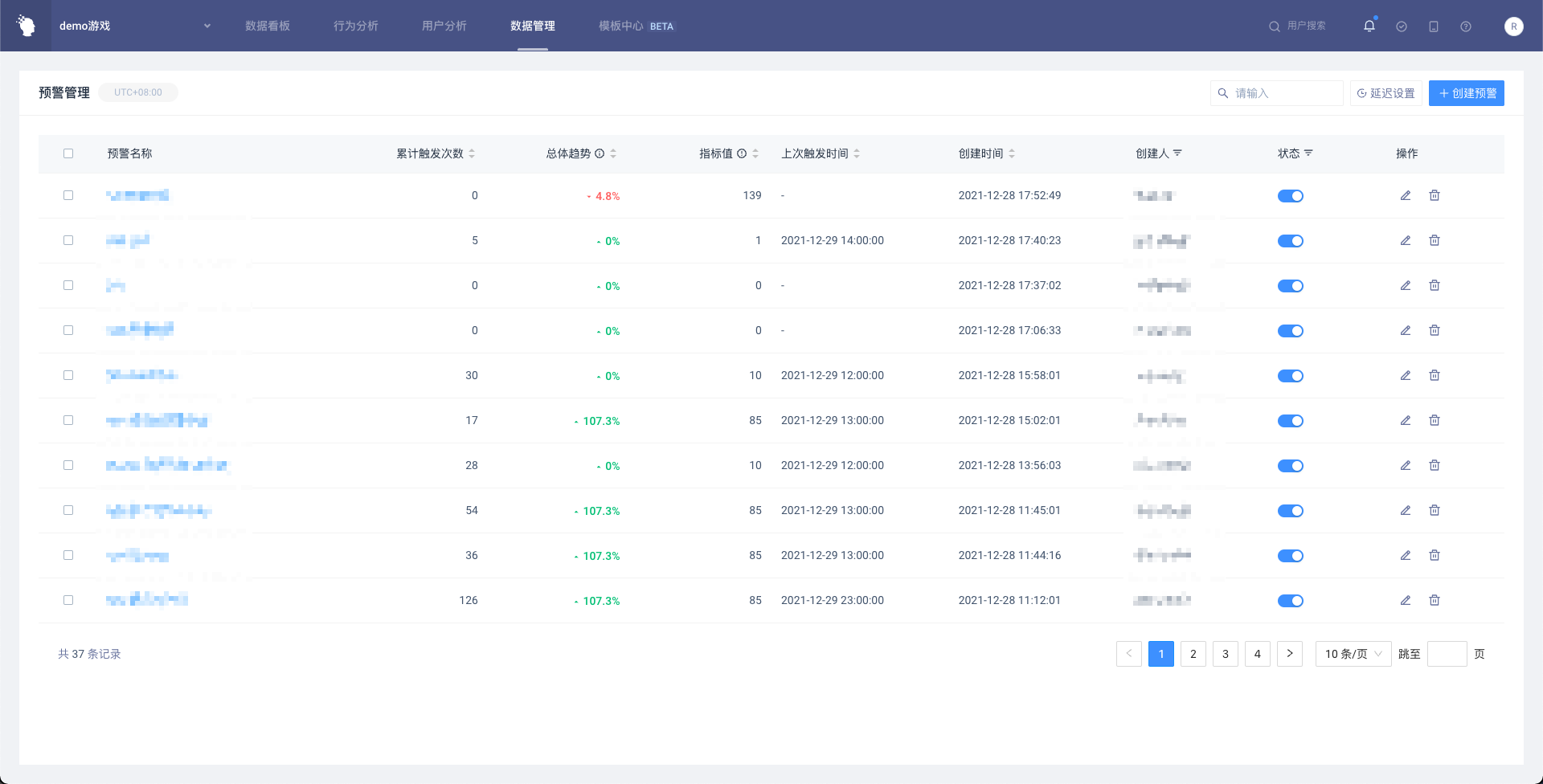
# 3.2 Inapplicable Scope
Time data that uses server time for display or timing calculations without time zone offset.
(1) Data update time of report and dashboard in calculation

(2) Set up regular updates of dashboard and dynamic updates of user groups
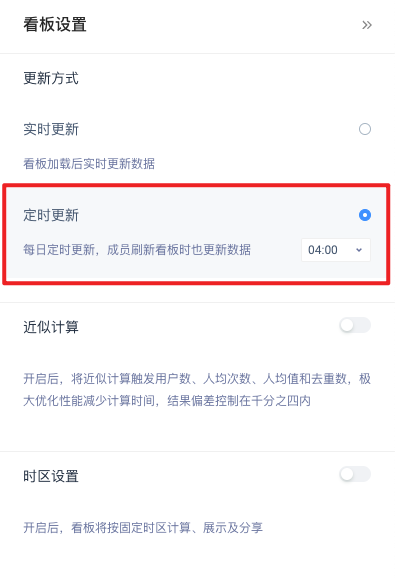
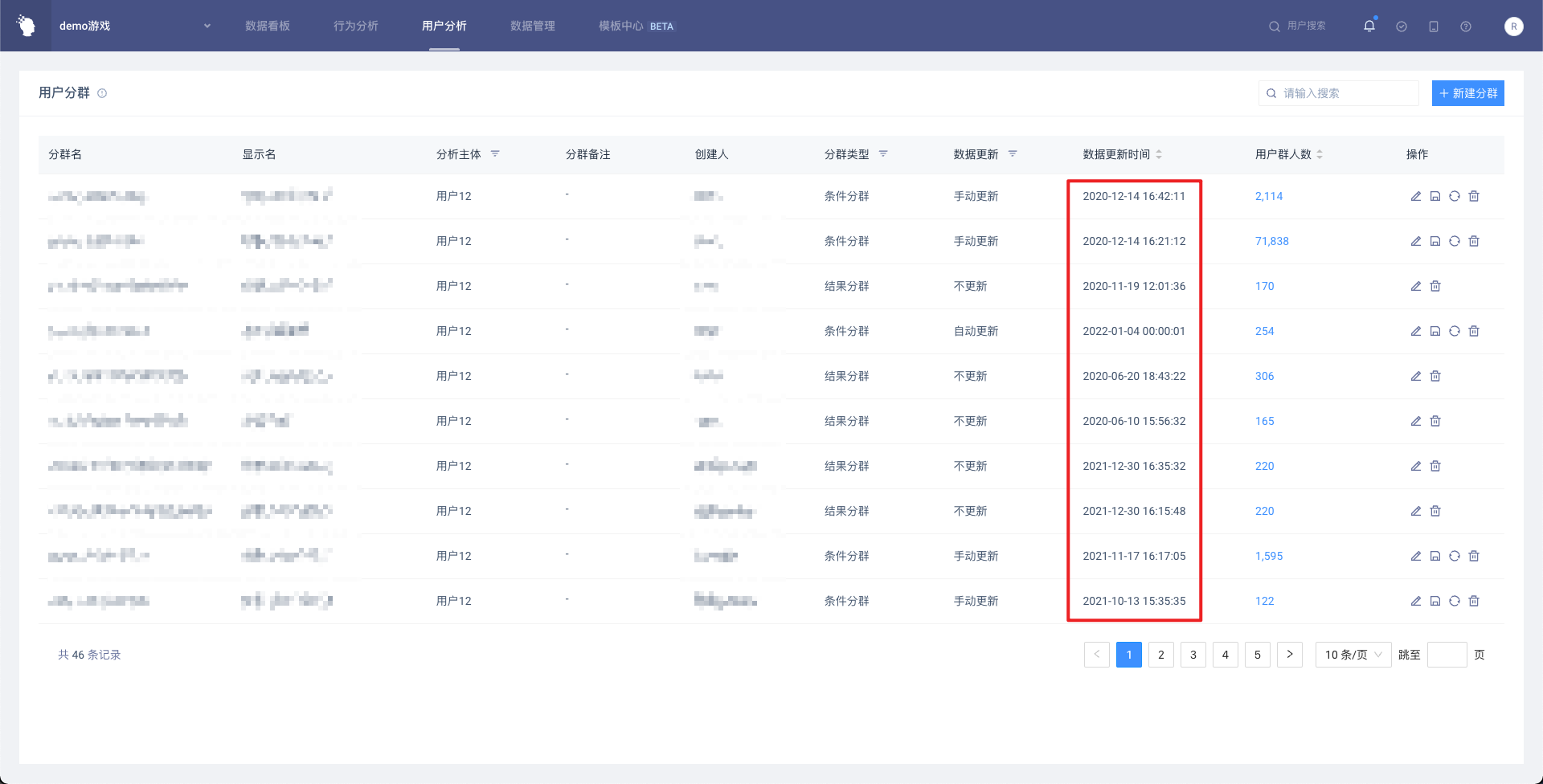
(3) Calculate in SQL
(4) When time type attribute is included in the creation rule of the virtual attribute
Create a virtual attribute during the time type attribute does not participate in the offset, still calculated according to the original time ; if the virtual attribute is a time type, the value of the attribute is offset when using the virtual attribute.
# IV. Data Calculation Criteria
# 4.1 Conditions for Offset Handling of Events
How to offset an event after selecting an attribute as an offset attribute
| With this attribute, valid | This attribute is invalid | No such attribute | |
|---|---|---|---|
| Select default properties | Use #zone_offset for offset | No offset | No offset |
| Select an attribute | Use this property to offset | No offset | No offset |
This attribute is invalid, for example, the uploaded data is non-numerical and cannot be parsed
- The time under the display time zone is: original data source time + (offset time zone-original data source time zone)
- When the original data source time zone information is missing, no offset processing is done
# 4.2 Cases of Event Offset Processing
From the perspective of data itself, time zone configuration items, and time period analysis in the model
(1) The main information carried by a piece of data
| #event_time (event local time) | #zone_offset (relative to UTC ± 00:00 time zone offset information) | X a numeric field (relative to UTC ± 00:00 time zone offset information) |
|---|---|---|
| 2020-01-01 12:00:00 | 8 | -4 |
The meaning of this event is that the local time of the event is 2020-01-01 12:00:00
According to #zone_offset, the local time zone is UTC + 08:00
Judging by X, the local time zone is UTC-04:00
(2) Time zone configuration items: options after opening
| Scene 1 | Scene 2 | |
|---|---|---|
| Set conditions | Offset to UTC + 09:00 by default attribute | X offset to UTC + 09:00 |
| Meaning | Display the original data source as UTC + 09:00 | Display the original data source as UTC + 09:00 |
| The trigger time of the original data source in the display time zone is | 2020-01-01 13:00:00 | 2020-01-02 01:00:00 |
# VI. Best Applications
# 5.1 Unify Overseas Data Using Standard Time Zones
The most important role of time zone settings is to standardize global data generated by oversea products in a defined time zone, such as all data being offset to UTC +00:00, by which data indicator can be unified to avoid cross-day data problems caused by time zones.
# 5.2 Resolve Unnatural Day Activity Data
Unnatural day activities refer to the start and end times that do not follow the local natural day change time, for example, the activities start and end at 3 a.m. During analysis, it is possible to use 3 points as the date cutting point for analysis. At this time, the time zone editing function can be used to set the time zone corresponding to the date cutting point and switch during analysis to complete the retention/return visit analysis requirements for such activities.
# 5.3 Data Viewing of Overseas Teams
If you have an overseas team on your team, use the time zone setting function. If the time zones where these teams are located are configured as optional time zones, they can be switched to the corresponding time zones when viewing data, which is more in line with the habits of overseas teams. At the same time, the default time zone is set as the common time zone used by all teams in communication and discussion, which not only maintains their own usage habits, but also ensures the efficiency of cooperation.
